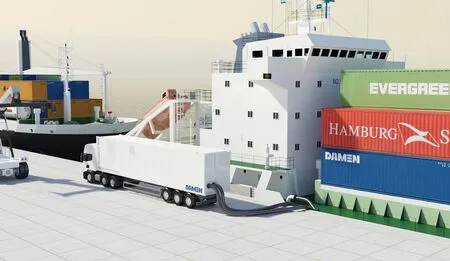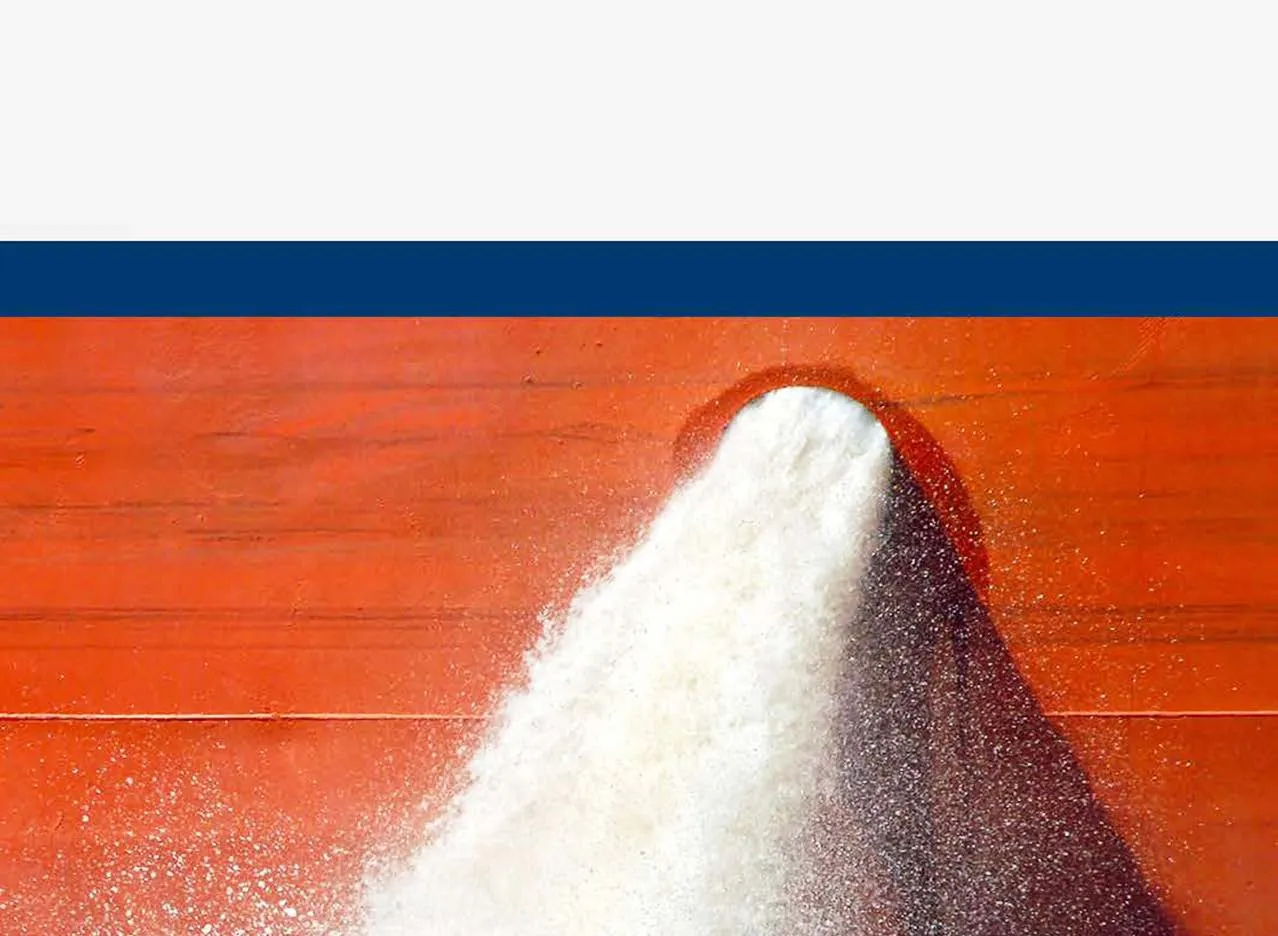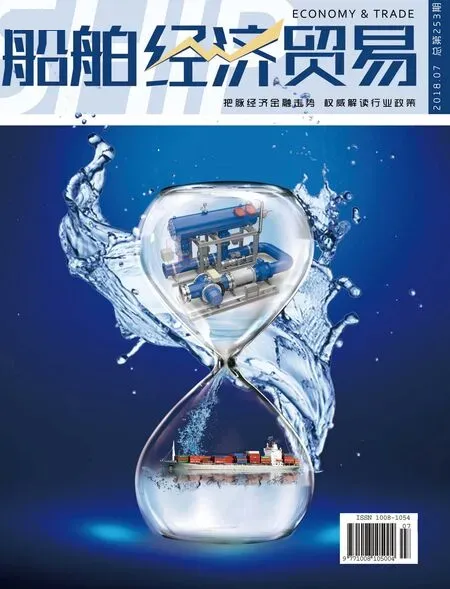Is Ballast Water System Market Ushering a New Competitive Stage in Forthcoming BMWC Implementation?
2018-08-02LiQinNiuYan
Li Qin Niu Yan
Qingdao Shuangrui Marine Environment Engineering Co Ltd signed a contract with Nippon Yusen Kaisha(NYK) on July 9, supplying ballast water treatment (BWT) systems for NYK 89 operational ships. It is said that it is the order of the largest ship number and amount in the global BWT market to date. An industry source noted the actual implementation date of the Ballast Water Management Convention (BWMC)is imminent, the BWT system market is heating up and gradually entering a new development stage, with fiercer and diversified competition in relevant aspects.
“Can You Stand the Rain”?
IMO BWMC was launched in 2004 and came into effect on September 8, 2017. As a result of the temporary introduction of “phased arrangement”,the convention implementation time BWT system manufacturers have been looking forward to for years was put off by two years. The “phased arrangement”let shipowners who had to set out for installing the BWT system right away under the original scheme take a long breath but also let down BWT system enterprises who were expecting order“outbreak”.
Due to too long market warmup time and other factors, Ocean Saver,the global second Norwegian company which had passed USCG type approval announced bankruptcy on September 13 of last year. This obviously cast a shadow over the BWT system market which had been prepared for years. Many industry players said due to actual postponement of BWMC implementation time, too long capital return cycle and other factors, not a few BWT system manufacturers will step into the shoes of Ocean Saver.
However, about half a year later,the BWT system market showed the sign of getting popular, the number of ships intending to have the BWT system installed was growing rapidly, orders received by BWT system manufacturers started to increase, and the harvest season, as it were, for BWT system manufacturers was coming. Three factors can be attributed to the phenomenon,according to industry analysts. First of all,as actual implementation date of BWTC is drawing near, time left for shipowners to have BWT system installed is less and less. Furthermore, in recent one year,USGC inspection of ship ballast water was increasingly strict. According to Port State Control (PSC) statistics released by USCG, USCG issued a total of 219 ballast water management defects list in 2017,up 99.1% from 110 in 2016. According to elaboration by defect types, top five were BW log (22%), compulsory practice(18%), alternative management method(18%), BW discharge (17%) and BW management plan (6). The situations drive more shipowners to set about installing BWT system to cope with convention effectiveness and port state increasingly stringent BW inspection.

Secondly, the shipping market has recovered since the end of 2016, capacity demand growth has driven up freight rate rise, substantially improving operation status of shipping companies, and most of them have realized return to profitability or profit growth. Abundant fund in the hands of shipping enterprises means fund guarantee for installing BWT system.With the recovery of the shipping market,there are more newbuildings on the market, and they are all equipped with the BWT system, thus further catalyzing the BWT system market.
Further, since USCG issued its first BWT system type approval certificate in December 2016, more than 15 manufacturers have submitted type approval applications to USCG to date and nine have passed USCG BWT system type approval. This has relieved shipowners, especially those navigating on US waters, of their worries to some extent.
Moreover, through years’technical and product optimization, BWT system technology has become mature,product prices have somewhat declined and tend to be stable, so that shipowners think it’s high time to set about.
Norwegian Optimarin executive said a large number of shipowners were swarming into the market,BWT installation amount was on the exponential growth and his company March sales were 4 times January figures.China Qingdao Headway Technology Co Ltd obtained 52 ship-sets in Q1 this year and so far, the Company has sold more than 1400 sets of Sea Guard BWT systems. All signs indicate that the BWT system industry market is maturing.
Does Competition Tend to be Diversified?
According to the US third party research institution Technavio’s“2017-2021 International Ballast Water Management Market Study”,the global BWT system market size was USD6.81 billion in 2016, the figure may reach USD26.71 billion, and CAGR(compound annual growth rate) exceeded 31%. According to IACS ship docking certificate renewal plan statistics at the beginning of 2017, about 32000 existing ships will have BWT system retrofitting requirement in future on the globe. The vibrant and potential market triggers fierce competition from BWT system related stakeholders. In the new development stage, such competition shows new features.
Aside from the competition of fighting for orders on the market by stepping up market exploitation and establishing global after-sales service network and other measures, there is also competition by stakeholders in improving system type approval c o n v e n i e n c e a n d d e v e l o p i n g international standard.
For the purpose of domestic enterprises conducting BWT system USCG type approval test “in the doorway”, KR became the Asian first independent laboratory of the BWT system field as approved by USCG. Korea built 4 sets of BWT system test facilities,which, apart from BWT system test certification on the land, can carry out such test certification on the sea, river,lake and water areas where river, lake and sea meet. This creates conditions for Korea BWT system accelerating approval process and reducing approval cost.
In view of the disadvantages in the type approval test convenience in relation to Korean enterprises, Chinese relevant institutions have vigorously conducted infrastructure and technical capacity building. On the wake of obtaining DNV GL laboratory approval certificate, CSIC No.704 Research Institute obtained USCG laboratory approval certificate in April of 2018 and became China’s first, Asian third and global 8th environmental laboratory which has obtained USCG approval. An industry source commented this means Chinese BWT system manufacturers will no longer have to go to Europe or Singapore for relevant test, narrowing down gaps with Korean enterprises in type approval test convenience, significant to improving international competitiveness of Chinese BWT system manufacturers.
Furthermore, competition aimed at improving discourse power on international market by developing an international standard is under way. At present, countries leading the development of the international standard for BWT management are primarily China, Korea and US; it is under joint development of enterprises and research institutions in China, led by the Department of Transportation in US, and also under joint development of enterprises and research institutions in Korea. So far, one item about the international standard for BWT management has been released, detailing design of sampling end; drafts of some standards have been set up, 3 items covering equipment, 2 of them involve the electrolytic method and one is the ultraviolet method.

Three equipment standards whose projects have been set up and involving equipment are “Ultraviolet method ballast water management system --scaling calculation method -- RANS-DO model”, “Health and risk assessment of ballast water management system based on ISO 23314” and “Hydrogen safety measures for ISO23315 electrolytic method ballast water management”.The first item was drafted by Jiujiang Institute of Precision Test Technology and it is the international standard whose project has been first set up in the Chinese BWT field. The latter two items were jointly drafted by CSIC No.704 Research Institute and Qingdao Shuangrui Environmental Engineering Co Ltd, they were the first batch of international standards in the electrolytic method ballast water treatment field,filling the field void. China efforts in the development of international standards for BWT system are expected to improve China’s discourse power in the international market and are of long-term value to competition of Chinese BWT system enterprises in the international market.
An industry source said BWMC was full of twists and turns from its unveiling to implementation, inundated with wrestling of all stakeholders, disputes over the time of performance, doubts about equipment technology, compelled bankruptcy and voluntary withdrawal of some enterprises. Ultimately, BWMC on-time performance becomes a bigprobability event, the BWT system market has ushered in a new stage and has become a maturing market. Active performance is proposed to jointly foster the industrial chain and establish the BWT system industry as a rare sector for new economic growth in the shipbuilding domain.
杂志排行
船舶经济贸易的其它文章
- Hansman Yacht: Explores a New Way to Expand the Market
- Security at Overseas Ports Analyzed
- Boost Strategic Cost Management,Assist in Ship Enterprise Management Improvement
- Chinese Unmanned Surface Vessel:From Technology Followship to Leadership
- 市场成交寥寥运价持续下跌 2018年6月中国沿海(散货)运输市场分析
- 市场需求增加航线表现分化2018年6月中国出口集装箱运输市场分析
